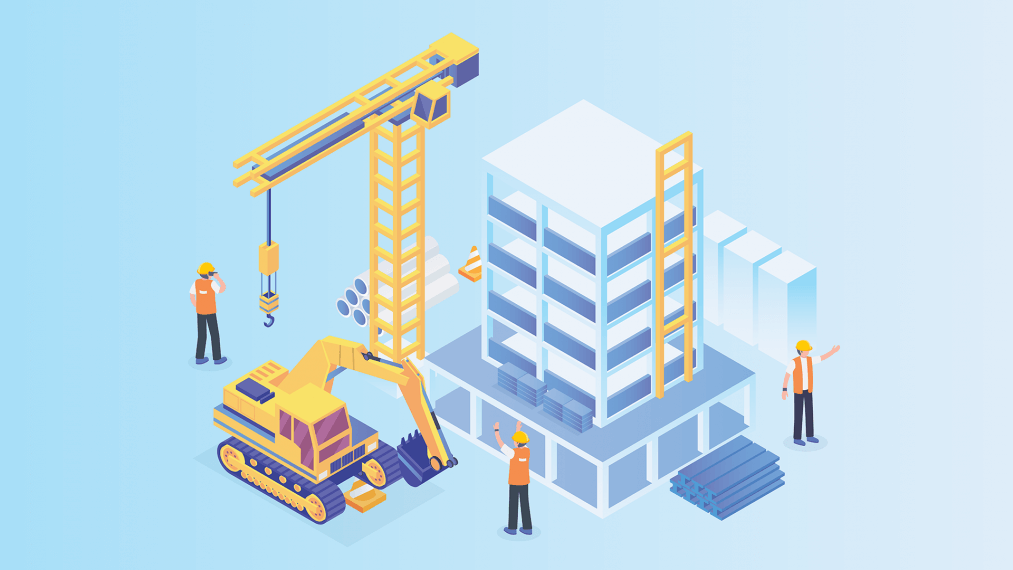Despite recent challenges, the global building products and materials industry is expected to maintain a compound annual growth rate of nearly 6% through the year 2025. Based on these projections, the annual market size will increase from its 2020 figure of $946.26M to over $1,282M over the next five years.
This positive outlook has led several private equity firms to sell off some assets. For instance, Andrew Nikou’s PE firm recently sold AXTER and the skylights division of its building products company, SMAC.
In light of these developments, let’s take a closer look at seven trends that are shaping the future of the building products industry.
Table of Contents
1. Supply Chain Concerns
While the overall outlook for the building products industry is positive, there are still some notable short-term concerns. Specifically, companies within the industry are worried about ongoing supply chain issues because many materials are sourced from China.
In response to these issues, purchasers have become less brand conscious and are more concerned about obtaining useful materials. However, there is no end in sight to the shortage of building products, as demand for homes is at a historic high.
2. Efforts to Cut CO2 Emissions
Unbeknownst to many, the production of cement accounts for approximately seven to eight percent of the world’s total CO2 emissions. Many companies have begun deploying measures to reduce their environmental impact.
While the end result of these efforts will have a positive effect on CO2 emissions, they may also temporarily cause cement prices to rise. This is because these organizations must raise prices to offset the purchase and implementation of the new cement production technologies.
Fortunately, many governments are offering incentives to these businesses, which will absorb some of the financial impacts.
3. Inflated Housing Prices
In the U.S., house prices have soared tremendously since the beginning of 2020. Demand for homes also remains significantly higher than normal. However, supply chain issues have slowed the construction of new homes.
As building product manufacturers resolve supply chain issues, they may be able to better keep up with consumer demands. In turn, this should stabilize home prices.
4. Positive Commercial Construction Outlook
Whereas the housing market has been somewhat erratic, the commercial construction space has been healthy and consistent. Many states have upped their spending on various infrastructure projects. In addition, private entities have continued to invest in large structures, including office spaces and manufacturing facilities.
5. An Uncertain Tariff Situation
Not all news surrounding the building products industry is positive. U.S. tariffs have created even more strain on an already tense supply chain situation.
In response, several organizations within the building products industry have called on the government to suspend taxes on essential building goods and materials. Specifically, they ask Congress to temporarily eliminate tariffs charged on building supplies imported from China and Canada.
The National Association of Home Builders is leading the charge. Their efforts are prompted by the recent erratic fluctuations in prices, such as the quadrupling of lumber costs. While these prices have since fallen, they remain significantly higher than normal.
The uncertain tariff situation has the potential to exacerbate supply chain issues. If not addressed, these taxes on building supply imports can stifle the projected growth of the industry.
6. Increased Emphasis on Sustainability
Everyone from line-level consumers to federal governments and international organizations have placed an increased emphasis on sustainability in recent years. These efforts have prompted building product companies to alter their manufacturing practices in order to reduce their environmental impact.
Once such development involves the use of polyethylene terephthalate (PET) in paved roads and cement. PET is commonly used in various electrical components, bottles, and other products that contain recycled materials.
PET may help building product manufacturers create more energy-efficient and durable goods. PET also translates to a 19% cost reduction when compared to standard concrete.
This cost reduction may produce a trickle-down effect that helps builders offset rising prices of other construction materials. These savings can then be passed down to consumers, which will positively impact the projected growth of the building products industry.
7. Focus on DIY Projects
During the pandemic, millions of people spent dozens of additional hours at home every single week. This home time prompted many individuals to take on DIY projects in order to renovate their living and recreational spaces. Naturally, this trend had a positive impact on the building products industry as a whole.
While the building products market still has a long way to go before it has recovered from the impact of the pandemic, the overall outlook is positive. If manufacturers can resolve supply chain issues and keep prices reasonable, then the industry should continue to experience a positive CAGR that meets or exceeds current projections.

